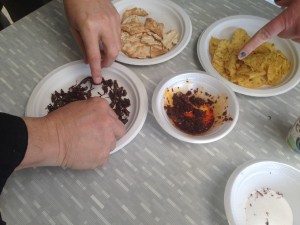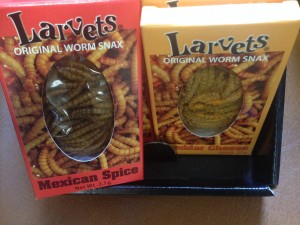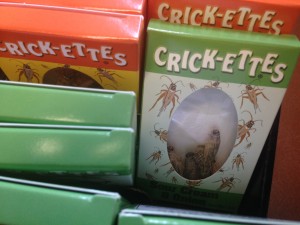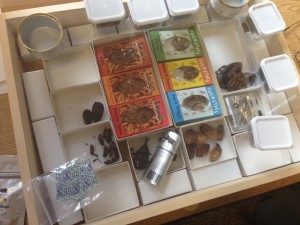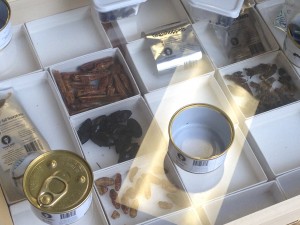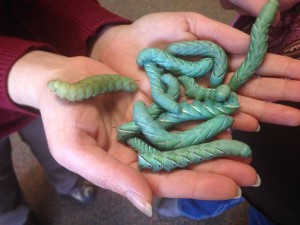IPM Working Group Meeting 2015 Day 1 – March 18
The three day meeting started with a lecture in the Museum Conservation Institute (MCI) Theater by two founding members of the IPM Working Group: Rachael Perkins Arenstein, IPM Working Group Co-Chair and Leon Zaks, Zaks Software and museumpests.net webmaster on:
Establishing Online Communities to Promote Best Practices in Collection Care
Rachael defined “online community” and shared research, analysis, information and questions considered such as what digital tools are available and who are the audiences? What are the motivators for moving forward? Is it to advance the bottom line? Is it to advance the mission? Examples of preservation related online communities include the IPM Working Group and its site museumpest.net, Storage Techniques for Art, Science and History (STASH), the American Institute for Conservation wiki site, AIC’s blog Conservators Converse. Rachael asked the question “What is the best way to bring in more experienced professionals to contribute?”
Leon Zak discussed different platforms or types of online communities for sharing and editing information. He stressed the importance of understanding Users’ needs. Does it need to be closely vetted, a live site or a static site? Is it time or content indexed? Is content transferred by many to many or few to many? Leon created a platform comparison chart including Wiki, blog, forum, group, email lists and websites to answer those questions. Other questions to consider include: who will be the hosts? Will a contract include site backup? Is the traffic high or low (less than 5000). Who is the Designer? While sites like Facebook can be less intimidating for many people, Google does not search Facebook so the impression is that it is slightly more casual and private than other platforms and may not meet a community’s needs.
Tours
After a networking lunch courtesy of MCI, the meeting continued in the afternoon with IPM-related tours of the Museum Support Center facilities.
National Museum of Natural History, Department of Anthropology – Low temperature treatments and Historic pesticide policies/ Department of Collections Management – Storage policies
As part of the Anthropology tour, Conservator Michele Austin-Dennehy discussed the history of pesticide use and low temperature treatments at the National Museum of Natural History. Earliest collections that were treated include the US Exploring Expedition. Pests were eating collections as well as specimen cards and data. Treatments included baking collections and arsenic and mercury were applied. There was a designated poisoning room. Turpentine, gasoline, cayenne pepper and benzine were also used. Certain objects could not handle all treatments such as deer hair. Testing was done for a 2010 Anchorage Loan on human exposure to heavy metals in the collection. Dosimeter (personal detection monitor) readings were monitored and staff provided urine samples. Based on the data collected they created procedures for handling artifacts treated with heavy metals. Volatile vapors are found initially when a box is opened. They open boxes and leave them for ½ hour to avoid exposure. Sheets wrapped around the collection items adsorbed heavy metals. Mercury adhered and could then be easily brushed off allowing the possibility of exposure.
Catherine Hawks, National Museum of Natural History Museum Conservator, discussed wooden and metal frame cabinets in the collection. They are in the process of exchanging wooden cabinets with metal cabinets. They found that modern metal cabinets holding items that were treated with mercury vapor did cause mercury to adsorb onto the interior paint. Mercuric sulfide or metallic mercury adhered onto the inside walls of metal cabinets from collections. When exposed to light they turned black. Jerome and Lumex mercury vapor monitors work well for testing. Bird collections do not off gas much at all. The air exchange in the metal cabinets they use is every two to four days. They check seals with ultrasonic leak detection. This is especially recommended when retrofitting older exhibit cases. An SDT ultrasonic detector with a transponder is $5000.00 and leak detection training is required. Contractors who test pipes use these types of detectors. True up hinges to be sure they are level and place on leveling bases that allow cleaning underneath. Automatic welding creates very smooth joins in cabinets with less air openings. Humidity levels in the building can drop down to 9% in the winter and up to 70% in the summer. The relative humidity typically stays 42% – 48% inside the metal cabinets with the lowest RH 38% in their early generation metal cabinets.
Catherine recommended cleaning up old frass and this dramatically dropped infestation findings. All white paper and white cabinets are used to be able to see what is going on with a quick inspection. A survey of infestations in the collection was done and five to six cabinets were found to be infested. Infestations were found near the food service area and when bones were not cleaned up well enough after being in the dermestid chamber.
These are photos of anthropology storage at the Museum Support Center
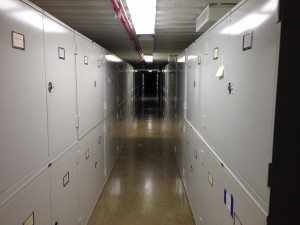
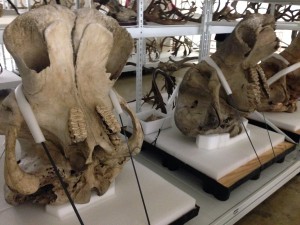
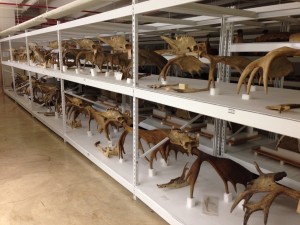
Horticulture, Greenhouses – Commercial operations & licensing of pest control operators
The Smithsonian graciously allowed us to tour the Smithsonian Gardens Greenhouses, where the Smithsonian grows all of the plants used throughout the museums. Tours were led by Vickie DiBella, the Greenhouse Manager, with significant additional information provided by the SGG’s many talented and experienced gardeners.
Tour participants learned about the innovative way that each plant is treated as a living museum object or artifact, given an unique identification number and barcode, and tracked through the greenhouses throughout its life. The Smithsonian uses a database system, called BGMap, which is specifically designed for botanical garden use in tracking the movements of plants.
Curating living museum objects obviously has many difficulties not usually associated with other museum objects – chief of which is the fact that these are objects that have a finite time span within the museum. Once a plant dies, its unique tracking number is retired, so that the museum retains a complete history of that plant’s lifespan. Another issue is the need to regulate relative humidity and temperature controls for portions of each greenhouse building. The ingenious answer here is an automated humidity/temperature system that constantly tracks the RH and temperature levels, and can open or close the greenhouse blinds to allow more sunlight, or trigger the sprinkler systems to mist the plants.
But perhaps the largest issue is the constant threat of pests, which is arguably more pressing for greenhouses than any other museum collection; anyone who has ever tended a garden knows that the fight against insect plant pests is a long and arduous one! Due to the varied nature of the SGG’s plant uses – from purely decorative, to being parts of other living animal’s enclosures, such as the National Zoo’s butterfly exhibit – the greenhouses employ a variety of pest management plans. For instance, some of the greenhouses are able to use insecticides on their collections, as their plants will not come into contact with humans or other animals; others, however, must use non-toxic means of pest control. The plants destined for use in the butterfly house at the National Zoo, for instance, employ benign means of control (for the plant) such as spraying the leaves with water and soap, or with special horticultural oils, which are believed to cause fatal dehydration in insects. The SGG also uses a system of lures, such as pheromone traps, to mitigate the negative effects of insects such as aphids, thrips, and hemiptera, which regularly prey on plants.

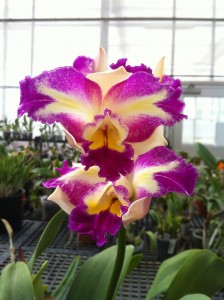
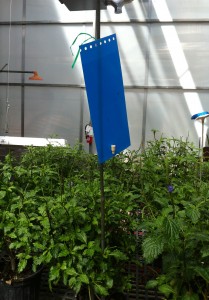
National Museum of Natural History, Botany Department – Predatory bacillus and pest control operator licensing
Members of the Botany Research Greenhouse toured working group participants through the greenhouse used to provide plants for research. The focus of the tour was on the integrated pest management used for controlling plant pests within the greenhouse. A combination of fungal, bacterial, and insect biological controls were highlighted including those used for aphids, thrips and mealy bugs. Occasionally, biological control populations need to be augmented by new stock but in general viable populations exist to deal with outbreaks of various pests. Similar to IPM within museums the primary means of pest control include exclusion, inspection, monitoring, and keeping a clean work environment.
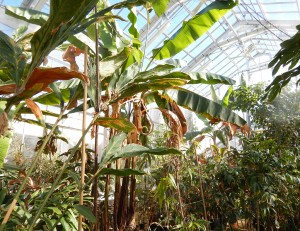
Museum Conservation Institute – Argon anoxic treatments
Robert Koestler, Director Chief Scientist, Smithsonian Institution
Robert Koestler demonstrated the use of heat sealed non-penetrable aluminized mylar bags for anoxia treatments with Argon and Nitrogen. Nitrogen is not successful for fungus or dry termites (has hexagon shaped frass). Robert flushed a waterlogged collection with Argon for six months using this technique. Argon will kill insects under 500 ppm of oxygen and will kill fungus as long as the oxygen level stays under 100 ppm. It pulls out aromatics drying the mold enough to clean it off. CO2 is not recommended using this technique due to the possibility of carbonic acid formation. This has not been studied though and it is not clear if it is a problem. The gas is put through a water bubbler allowing for 55% RH. This is regulated especially for parchment that is very sensitive to low relative humidity. The recommended time of treatment is four weeks for stages of larva, however two weeks is enough for clothes moths. The release tube should be put on the top since Argon pushes away residual oxygen to the top.
Robert does not recommend freezing. It slows down molecules causing them to break more easily and the compressors in freezers cause vibration. He gave us an example of damage caused by vibrations. Objects improperly mounted on a single post acted like a tuning fork. When people walked by they created vibrations causing bits of things to fall off of the artifacts. Freezing also causes contraction and expansion and leads to damage.
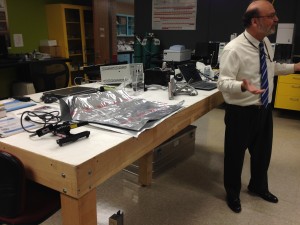
National Museum of Natural History, Museum Support Center- CO2 treatments/ trapping and monitoring
Jackson Tanner, Supervisory Collections Manager
Jackson Tanner described what is involved in using an 8 x 8 x 30 foot chamber for pest removal using anoxic treatment with CO2. We went inside the chamber and it contains a small portable heater, an air circulator and a PEM datalogger for monitoring RH and temperature. Also included inside the chamber are polyethylene tube ports built in to connect with the CO2 and a way for CO2 to be released outside. Jackson described safety issues and precautions. The chamber is inside a room that can be closed off and if there are leaks a CO2 alarm will go off. He keeps a portable oxygen tank available for emergencies to give about 10 minutes to leave the space. There are warning signs and indicator lights over the door. He warned that if you notice your throat is burning and you have a headache there is a CO2 leak. He described that if a leak occurs, CO2 will sink down to the floor and tested this using Canary brand gas detection monitors placed at different heights. Obtaining an Oxygen analyzer is helpful. They are approximately $4500, which is expensive, however they self calibrate. CO2 acts as a dessicant and the RH drops to lower than 30% at first and then raises to about 30%. He warned us against using ethafoam inside the treatment chamber under certain circumstances. This material is especially problematic in the use of museum quality crate construction with very specially fitted interiors. The Ethafoam will distort somewhat under extended exposure to CO2 and can cause delamination of the crate interior construction.
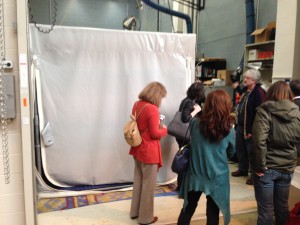
National Museum of Natural History, Department of Vertebrate Zoology – Whale bone issues in pod storage
The cetacean collection at the Smithsonian Institute is housed in two large hanger-type buildings behind the Museum Support Center. This facility allows for the large specimens to remain intact in the collection and for easier access. Because many of the specimens do not fit in cabinets, larger skulls require specially built mounts for storage on open shelving or in some cases the floor. Because house cleaning is an essential part of IPM, the managers have found an interesting way to deal with maintaining the floors. Aisles of cabinets can be sectioned off and robotic vacuums are let free within those spaces and they can easily fit underneath the raised cabinets.
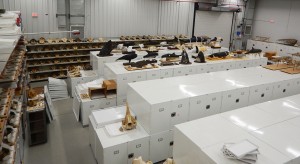
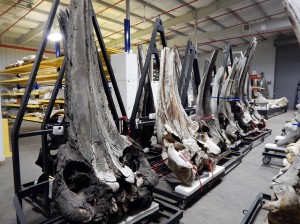
with writing contributions from Pamela Kischner, Cailin Meyer and Lynn Jones.

